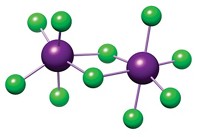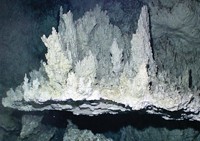Advertisement
Grab your lab coat. Let's get started
Welcome!
Welcome!
Create an account below to get 6 C&EN articles per month, receive newsletters and more - all free.
It seems this is your first time logging in online. Please enter the following information to continue.
As an ACS member you automatically get access to this site. All we need is few more details to create your reading experience.
Not you? Sign in with a different account.
Not you? Sign in with a different account.
ERROR 1
ERROR 1
ERROR 2
ERROR 2
ERROR 2
ERROR 2
ERROR 2
Password and Confirm password must match.
If you have an ACS member number, please enter it here so we can link this account to your membership. (optional)
ERROR 2
ACS values your privacy. By submitting your information, you are gaining access to C&EN and subscribing to our weekly newsletter. We use the information you provide to make your reading experience better, and we will never sell your data to third party members.
Materials
Reaction-Driven Mixing
Fluid Dynamics: Chemical interactions drive convection and stirring
by Mitch Jacoby
February 5, 2010
| A version of this story appeared in
Volume 88, Issue 6
Add hot water and stir. Those simple instructions capitalize on the well-known principle that stirring a solution can speed up chemical reactions. Researchers in Belgium now show that the opposite is also true: Chemical reactions can induce stirring (Phys. Rev. Lett. 2010, 104, 044501).
The investigation, which indicates that convection drives mixing between fluids in unexpected ways, suggests that chemically induced fluid flow may play a previously unrecognized role in geochemical and other naturally occurring processes.
Classic convective flow occurs in two-fluid systems in which a low-density material sits beneath a higher density one. Differences in density trigger convection as the denser fluid sinks and the other fluid rises. That process is the cause of flow in “lava” lamps, decorative novelty items that use heat to change the relative densities of wax and water solutions and induce flow (C&EN, Feb. 18, 2008, page 40).
In a combined modeling and experimental study, Anne De Wit, a professor of physical chemistry at Free University of Brussels; postdocs Christophe Almarcha and Philip M. J. Trevelyan; and coworkers studied the normally stable configuration in which a dense solution sits beneath a less dense one. But their study featured a twist: The solutions react chemically. The simulations show that the reaction disrupts the ordinarily stable configuration and drives asymmetric convective mixing at the interface, which in turn accelerates the reaction, they report.

To check their modeling results, the team layered a low-density hydrochloric acid solution on top of a higher density sodium hydroxide solution in a specially configured cell. As the solutions reacted and formed sodium chloride, differences in the densities of the reactants and product caused fingerlike convective plumes to reach upward from the interface—but not downward.
“It’s surprising that a simple acid-base neutralization reaction can affect the appearance of convection,” says Louisiana State University chemistry professor John A. Pojman. This type of instability may occur in nature when rivers or streams flow into lakes where neutralization occurs, he adds.





Join the conversation
Contact the reporter
Submit a Letter to the Editor for publication
Engage with us on Twitter